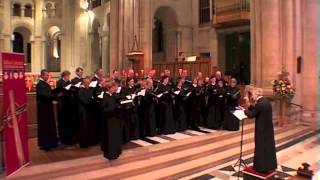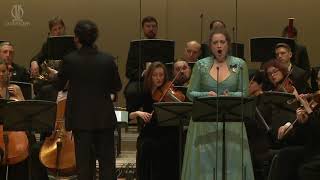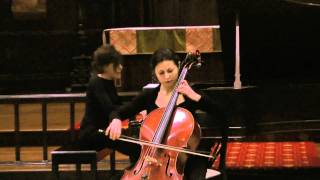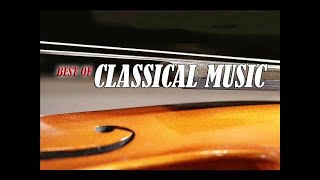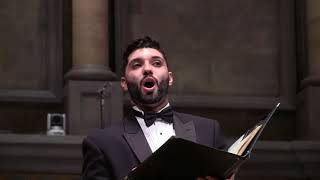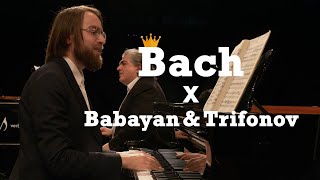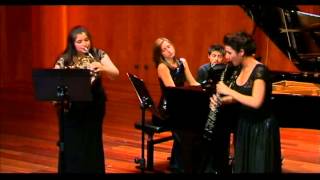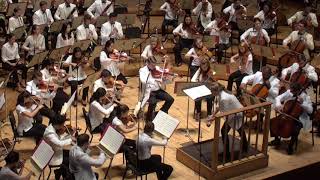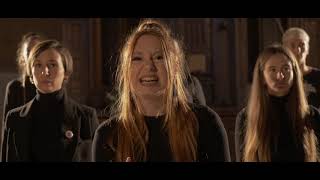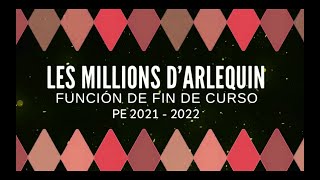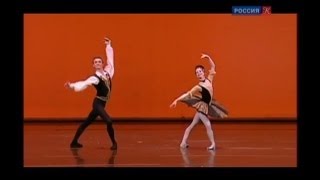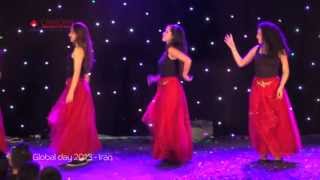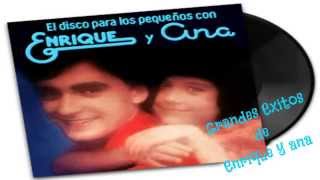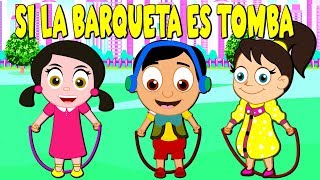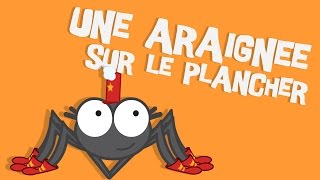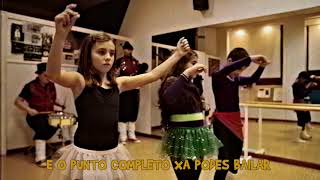From here we join the celebration of November 22, St. Cecilia, patron saint of musicians.
We also join November 25, International Day for the Elimination of Violence against Women.
Recommended music videos for initiation to classical music
Saint Cecilia , according to the Martyrologium hieronymianum , was a Roman noblewoman who converted to Christianity and was martyred for her faith on an undetermined date, between the years 180 and 230. In the Catholic Church , she is the patron saint of music and other guilds and municipalities. ; Its attributes are the organ, the lute and the roses. Around the year 480, anonymous minutes of Saint Cecilia appeared in Latin, which were transmitted in numerous manuscripts and translated into Greek. According to this text, Cecilia had been a virgin from a Roman senatorial family of the Metellus , who had converted to Christianity since her childhood. Cecilia 's artistic reputation was probably the result of a poor translation of the minutes of Saint Cecilia .
Cantantibus organis is an antiphon or hymn in honor of St Cecilia , of which numerous versions have been written. Today we offer the composition written by Peter Philips and performed by The Priory Singers directed by Harry Grindle.
Christoph Willibald Gluck (1714-1787) was a German composer considered one of the most important opera composers of Classicism (1750-1820). He completely reformed the opera by eliminating the da capo arias , and the extensive dry harpsichord recitatives, replacing them with recitatives accompanied by the orchestra; He dispensed with the castrati and the exhibitionism of the singers, giving greater relevance to the plot, while at the same time elevating the overture, the ballet and the chorus as integral parts of his operas. Among his most valued works are Orfeo ed Euridice (1762) and Alceste (1767) premiered in Vienna , and Iphigénie en Áulide (1774), Armide (1777) and Iphigénie en Táuride (1779) premiered in Paris .
Orpheus and Eurydice is an opera in three acts written by Gluck in which he reflects his renovating concerns, discarding all types of trivial manifestations and highlighting the force of the plot; To do this, he does not hesitate to use dances and choirs, in addition to what was previously stated. The plot is based on the Greek myth of Orpheus who was able to tame wild beasts with his music and that after the death of his beloved Eurydice , Cupid allows him to go down to hell to rescue her on the condition that on the way back do not turn your head to look at her; Faced with Eurydice 's insistent pleas, Orpheus turns his gaze towards her, thus definitively losing his beloved.
Today we offer the aria Che farò senza Euridice with the Swedish mezzo-soprano Ann Hallenberg in the role of Orpheus .
Piotr Tchaikovsky (1840-1893) was a Russian composer who graduated from the Saint Petersburg Conservatory and wrote works of different genres, although where he achieved the greatest success was with his ballets. In 1859 he obtained a civil servant position in the Ministry of Justice , which he would leave after three years to be able to dedicate himself only to music. His personal life was plagued by continuous crises since the death of his mother and his repressed homosexuality, which forced him to enter into a marriage that only lasted a few months. He wrote more than 150 compositions, including works for piano, quartets, suites, symphonies, concertos, choirs, cantatas, operas and ballets. He died at the age of 53 and is considered one of the greatest composers in history.
The nocturne is a piece of vocal or instrumental music, with a sweet melody and free structure. The name "nocturne" was given, in the first instance in the 18th century , to a piece played at times, generally at night parties and then put aside. In its most common form (that is, as a single-movement piece usually written for solo piano), the genre was cultivated mainly in the 19th century . The first nocturnes written under that name were composed by John Field , seen as the father of the romantic nocturne , which has a characteristic cantabile melody with an arpeggiated accompaniment. However, the most famous exponent of this music was Frédéric Chopin , who wrote 21 works of that genre.
Today we offer Tchaikovsky's Nocturne Op.19 No.4 written for cello and piano performed by the Ukrainian cellist Daria Janssen and accompanied by the Spanish pianist Raquel Gorgojo .
0´00´´ Tchaikovsky - Nutcracker Suite, Op. 71a: No. 3, Valzer dei Fiori .-. 7´03´´ Bach - Orchestral Suite No. 2 in B Minor, BWV 1067: VII. Badinerie .-. 8´32´´ Beethoven - Piano Concerto No. 3 in C Minor, Op. 37: III. Rondò .-. 18´07´´ Mozart - Eine kleine Nachtmusik in G Major, K. 525: I. Allegro .-. 24´10´´ Mozart - Eine kleine Nachtmusik in G Major, K. 525: II. Romance. Andante 30´49´´ Vivaldi - Concerto for Strings in D Major, RV 121: I. Allegro molto .-. 33´03´´ Rossini - Alleluja .-. 34´58´´ Brahms - Symphony No. 1 in C Minor, Op. 68: III. A little allegretto and funny .-. 39´37´´ Chopin - Mazurkas, Op. 7: No. 1 in B-Flat Major .-. 42´10´´ Strauss - An der schönen blauen Donau, Op. 314 .-. 53´34´´ Corelli - Concerto Grosso No. 1 in D Major, Op. 6: I. Largo .-. 56´30´´ Corelli - Concerto Grosso No. 9 in F Major, Op. 6: III. Gavotta. Allegro .-. 57´35´´ Paganini - 24 Caprices for Violin, Op. 1: Nos. 6, 7, 16 & 22 .-. 1h 09´52´´ Vivaldi - Sinfonia in E Major, RV 132: I. Allegro .-. 1h 12´27´´ Chopin - Mazurkas, Op. 33: No. 4 in B Minor .-. 1 h17´19´´ Vivaldi - Sinfonia in C Major, RV 112: I. Allegro .-. 1h 19´18´´ Mendelssohn - Lieder ohne Worte, Op. 62 .-. 1h 22´07´´ Mozart - Piano Concerto No. 19 in F Major, K. 459: I. Allegro .-. 1h 34´14´´ Telemann - Viola Concerto in G Major, TWV 51:G9: II. Allegro .-. 1h 37´14´´ Bach - Harpsichord Concerto No. 1 in D Minor, BWV 1052: I. Allegro
Recommended classical music videos
Gerald Raphael Finzi (1901 1956) was a British composer of the first half of the 20th century , a continuator of the great English tradition embodied by Elgar, Parry, Stanford and Vaughan Williams . His popular image is that of a lyrical pastoralist, which made his music seem old-fashioned even during his lifetime. In his case one cannot speak of experimentation and even less of modernity; but he had his own, personal voice, recognizable in his song cycles and choral works, in which he demonstrated a perfect communion between word and music, the result of his great knowledge of English literature. Works such as the Cello Concerto and the Intimations of Immortality show him as more than just a miniaturist. His popularity has been increasing since his death.
The ode (from the Latin oda , borrowed in turn from the Greek οdé, originally "song" or "action of singing", and very shortly later also used to designate hymns and songs of joyful or funeral, war or magical praise) is a lyric poem and a poetic composition with a high or sung tone that deals with various issues, including a reflection by the poet. Depending on the topic being discussed, it can be religious, heroic, philosophical or loving. In general it applies to any poem intended to be sung. It is also used to praise qualities possessed by people or objects that the poet wants to highlight positively.
Today we offer the Ode to Saint Cecilia written by Gerald Finzi for tenor, choir and orchestra performed by tenor Kameron Ghanavati accompanied by the Eastman-Rochester Choir and the Eastman Philarmonia Orchestra, conducted by Maestro William Weinert .
Johann Sebastian Bach (1685-1750) was a German violinist, organist, conductor and composer, born in Eisenach into the most prominent musical family in history. In 1703 he obtained his first job in Arndstat and in 1707 he moved to Mülhausen as an organist, where he married his cousin Maria Barbara with whom he had seven children. After the death of his wife in 1720, he remarried Mary Magdalene with whom he would have another thirteen children. In 1723 he moved to Leipzig where he would reside until his death at the age of 65. Considered one of the three main geniuses in the History of Music along with Mozart and Beethoven, his influence has been notable on Haydn , Mozart , Beethoven , Mendelssohn , Schumann , Chopin ... and many other renowned composers.
The Harpsichord Concertos , BWV 1052-1065 are a series of works written for harpsichord, strings and basso continuo by Johann Sebastian Bach . There are seven complete concertos for solo harpsichord (BWV 1052 to 1058), three concertos for two harpsichords (BWV 1060 to 1062), two concertos for triple harpsichord (BWV 1063 to 1064), and one concerto for four harpsichords (BWV 1065). In addition, there is a single nine-bar fragment of a concerto for a harpsichord (BWV 1059), which adds an oboe to the string and continuo ensemble.
Concerto in C minor, BWV 1062 . It is based on the Concerto for Two Violins, BWV 1043 , transposed one tone down, as in BWV 1054 , to avoid the note E5 , in all likelihood non-existent on the harpsichord keyboard that Bach had at his disposal. Its articulation consists of three movements, as proposed by Vivaldi (Fast-Slow-Fast): I (0´31´´) Vivace, C minor, 4/4 .-. II (4´07´´) LARGO MA NON TANTO, E flat major, 12/8 .-. III (10´54´´) ALLEGRO ASSAI, C minor, 3/4. Today, in a version for two pianos and strings, it is offered to us by pianists Daniil Trifonov and Sergei Babayan accompanied by the Verbier Festival Chamber Orchestra conducted by the Hungarian maestro Gábor Takács-Nagy.
Carl Heinrich Carsten Reinecke (1824-1910) was a German composer, teacher, pianist and conductor. Born in Hamburg , he began writing music at the age of seven, eventually performing as a pianist at the age of twelve. In 1846 he was appointed pianist to the Court of Christian VIII of Denmark . In 1851 he became a professor at the Cologne Conservatory ; In the following years he was appointed musical director of Barmen , musical and academic director of the Singakademie Wroclaw (Breslau), conductor of the Leipzig Gewandhaus Orchestra , where he remained until 1895 and where he died at the age of 85. Reinecke is remembered as one of the most influential and versatile musicians of his time; As a teacher, he taught great figures of music.
Trio for Piano, Oboe, and Horn. The entire trio contains great dialogue and the three instruments are arm in arm the entire time. The first movement (0´50´´) is a beautiful mix of longing and joy, with an idiomatic theme for oboe and excellent interaction between the three instruments. The horn, playing a more subdued version of the theme, balances the oboe. The two dance around each other before the oboe returns to the main theme while the piano waves beneath. In the second movement (10´38´´), faster and lighter than the first, the oboe and the horn work in imitation at all times. Lasting only about two minutes, in this scherzo the piano plays a lyrical counterpart to the oboe and the rhythmic back-and-forth of the horn. ( Excerpted from Jessie Rothwell's LA Phil article )
Today we offer these two movements in interpretation of Bengü Aktan : Oboe, Burçak Uysaler : Horn and Alina Shalamova : Piano.
Bedrich Smetana (1824-1884) was a composer born in Bohemia , a region that during the author's lifetime was part of the Austro-Hungarian Empire and today is one of the three regions of Czechia , where he is recognized as the father of Czech music. He is internationally known for his opera The Sold Bride. and by the cycle of symphonic poems Má vlast ('My country'). In 1856, faced with the disdain he felt from his compatriots, he settled in Sweden as a teacher and choir director in Gothenburg . In the early 1860s the more enlightened and liberal climate in Bohemia encouraged him to return permanently to Prague , where he devoted himself to composition until a mental breakdown in early 1884 led to his confinement in an asylum and his subsequent death.
Má Vlast (My Homeland) is a set of six symphonic poems composed by Smetana between 1874 and 1879. Although it is usually presented as a complete work in six movements, the six component parts were conceived as individual works. In these works Smetana uses the symphonic poem style pioneered by Franz Liszt , which includes a nationalist orientation to music that was common at the end of the 19th century . Each poem represents an aspect of Bohemian rural landscape, history or legends:
Vyšehrad (The High Castle) is the first symphonic poem of the six that make up the Má vlast cycle, which is inspired by the legends associated with the Prague Castro . The main musical motif of the entire work, the harps of the oracles, is introduced by the harps right at the beginning of Má Vlast . It was this motif that became the official jingle of the former Czechoslovak Radio , specifically the Prague radio station.
Recommended music videos for all tastes
The International Day for the Elimination of Violence against Women is commemorated annually on November 25 to denounce violence against women around the world and demand policies in all countries for its eradication. The call was initiated by the Latin American feminist movement in 1981, in commemoration of the date on which the three Mirabal sisters were murdered, in 1960, in the Dominican Republic . In 1999, the day of vindication was assumed by the General Assembly of the United Nations , violence against women being understood as "any act of violence based on belonging to the female sex that results in or may result in physical, sexual or psychological harm or suffering for women."
Recommended peculiar videos
Riccardo Drigo (1846-1930) was an Italian conductor and composer born in Padua . After achieving some notoriety as both a director and composer, he moved to Saint Petersburg where he directed various operas and ballets. He remained in Russia for 40 years writing different operas and ballets in collaboration with notable choreographers such as Marius Petipa , Lev Ivanov and Michel Fokine with whom he would collaborate closely.
Marius Petipa (1818-1910) was a French choreographer, ballet master and dancer, based in imperial Russia ; With him the era of romantic ballet ended to inaugurate that of the grand Russian ballet. His notable works include Swan Lake, Sleeping Beauty, The Nutcracker, Raymonda, Don Quixote, Paquita and La Bayadera .
Les Millions d'Arléquin. It is a ballet created in 1900 by Marius Petipa to music by Riccardo Drigo . In it, Columbine , Cassandre 's daughter, is in love with Harlequin , but her father has other plans. Her choice of groom for Columbine is the rich old Lèandre , but with Harlequin always nearby, Cassandre and his servant Pierrot must be on guard to keep the lovers apart. However, Pierrette , Pierrot 's wife, sympathizes with the couple and thwarts the plans of her husband and his master. In the end, love triumphs when the Good Fairy helps Harlequin by presenting him with a magical buffoonery that grants all his wishes.
Today we present the version offered by the Maracay Opera Theater Ballet School .
Satanella (also known as Le Diable amoureux ) is a ballet in three acts written by the French dancer and choreographer Joseph Mazilier (1801-1868) with music by Napoléon Henri Reber (1807-1880) and François Benoist (1794-1878). The scene that we see today is musically based on Paganini 's Carnival of Venice and the interpretation is carried out by Eugenia Obraztsova, first dancer of the Bolshoi Ballet of Moscow and the Mariinski Ballet , and by Alexander Sergeyev , first dancer, likewise, of the Mariinski Ballet .
Persian dance or Iranian dance refers to the indigenous dance styles of Iran . Dance genres in Iran vary depending on the area, culture and language of the local population, which includes many ethnicities, such as Kurds, Azeris, Turkmens, Jews, Armenians, Georgians, in addition to numerous Iranian tribal groups that can be found within of the borders of today's Iran . Ancient Persia was occupied by foreign powers: first the Greeks, then the Arabs, and then the Mongols, and in turn, political instabilities and civil wars occurred. Throughout these changes, there was a slow disappearance of heritage dance traditions. After the fall of the Persian Empire , when the country was destroyed, Iranian women and girls were enslaved by the new conquerors, often forced into sexual slavery and forced to dance erotically for the new rulers. The religious ban on dancing in Iran came with the spread of Islam , but was spurred by historical events. As a result, many of the talented Persian dancers moved to the West and spread mainly throughout Europe and the USA , and the new generation of Iranian dancers and ballet artists grew up in the diaspora.
Iran has four categories of dance and these genres are: Chain or line dances , individual improvisation dance, war or combat dances and ritual or spiritual dances. Line or chain dances are often named for the region or ethnic groups with which they are associated. Improvisation Dances use delicate and elegant movements of the hands and arms, such as wrist circles. War or combat dances imitate combat or help train the warrior. Ritual or spiritual dances often consist of a healing ritual involving trance, music and movement that is performed to rid a person possessed by a spirit and appears to be a state similar to that of an exorcism.
Riccardo Muti (1941), is an Italian conductor who for 19 years has been musical director of the La Scala opera house in Milan ; good connoisseur, therefore, of the lyrical and operatic repertoire. Together with Claudio Abbado, he is the benchmark for Italian conductors of his generation and has worked with the best orchestras in the world. In September 2010, Riccardo Muti became music director of the Chicago Symphony Orchestra and in the same year was named Musician of the Year by Musical America .
Throughout his extraordinary career, Riccardo Muti has conducted the most important orchestras in the world: from the Berlin Philharmonic to the Bavarian Radio Symphony Orchestra , from the New York Philharmonic to the French National Orchestra, passing through the Vienna Philharmonic, an orchestra to which he is linked by particularly close and important ties, and with which he has performed in Vienna, Salzburg and around the world since 1971.
Recommended music videos for children
Various Wikipedia articles have been used to write these texts.
The texts of Videomusicalis are written in Basque, Spanish and English.





